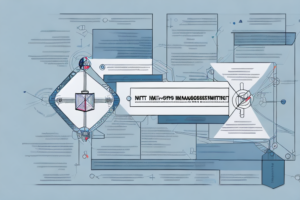What is the 4 key steps of risk management in order?
8 min read
Four steps in a process
Risk management is a crucial component of any successful business strategy. It involves identifying potential risks, assessing their likelihood and potential impact, and implementing strategies to mitigate those risks. The ultimate goal of risk management is to minimize the negative impact of potential risks on the business and maximize the potential for success. To effectively implement risk management, there are four key steps that must be followed, in order. Let’s take a closer look at these steps and what they entail.
Introduction to Risk Management
Before diving into the four key steps of risk management, it’s important to understand what risk management is and why it’s important. Business risk is a complex and multifaceted issue that can arise from a variety of sources, including economic, regulatory, technological, and market forces. Effective risk management helps businesses identify and address these risks, reducing the likelihood of negative impacts and improving the overall performance of the business.
Furthermore, risk management is not just about avoiding negative impacts, but also about taking advantage of opportunities that may arise. By identifying and managing risks, businesses can position themselves to take advantage of new opportunities and gain a competitive advantage in their industry. This is especially important in today’s rapidly changing business environment, where new technologies and market disruptions can create both risks and opportunities.
Understanding the Importance of Risk Management
There are several compelling reasons why risk management is crucial for any business. First and foremost, it helps to protect the business from potential financial losses. By identifying and addressing risks early on, businesses can minimize the impact and reduce the potential for significant financial losses. Second, effective risk management can help businesses identify new opportunities for growth and development. By examining potential risks, businesses can identify new and innovative ways to improve their operations and take advantage of emerging trends.
Thirdly, risk management can also help businesses comply with legal and regulatory requirements. Many industries have specific regulations and laws that businesses must adhere to, and effective risk management can ensure that the business is in compliance with these requirements. This can help to avoid legal issues and potential fines or penalties. Additionally, having a strong risk management plan in place can improve the overall reputation of the business, as it demonstrates a commitment to responsible and ethical practices.
The Four Key Steps of Risk Management
Now let’s take a closer look at the four key steps of risk management, in order:
Step 1: Identify Risks
The first step in the risk management process is to identify potential risks. This involves examining all aspects of the business and identifying areas where risks may arise, including operational, financial, regulatory, and reputational risks. It’s important to involve key stakeholders in this process to ensure that all potential risks are identified and addressed.
Step 2: Assess Risks
Once potential risks have been identified, the next step is to assess their likelihood and potential impact. This involves developing a risk matrix to help rank and prioritize risks based on their severity. The risk matrix should take into account the likelihood of the risk occurring, as well as the potential impact it could have on the business. This process will help to determine which risks require immediate attention and which can be addressed over time.
Step 3: Develop Risk Management Strategies
Once potential risks have been identified and assessed, the next step is to develop risk management strategies to mitigate those risks. This may involve implementing new policies and procedures, investing in new technologies, or developing contingency plans to address potential risks. It’s important to involve key stakeholders in this process to ensure buy-in and to identify potential roadblocks to implementation.
Step 4: Monitor and Review Risks
Finally, it’s essential to continually monitor and review risks to ensure that risk management strategies remain effective. This involves ongoing analysis and evaluation of potential risks, as well as regular reporting and communication with key stakeholders. By monitoring and reviewing risks on an ongoing basis, businesses can ensure that they remain proactive in managing potential risks and are well-positioned to respond to any unexpected developments.
It’s important to note that risk management is an ongoing process and not a one-time event. As businesses evolve and change, so do the potential risks they face. Therefore, it’s crucial to regularly review and update risk management strategies to ensure they remain relevant and effective.
Another key aspect of risk management is communication. It’s important to have open and transparent communication channels with all stakeholders, including employees, customers, and investors. This helps to ensure that everyone is aware of potential risks and the steps being taken to mitigate them. It also helps to build trust and confidence in the business’s ability to manage risks effectively.
Identifying Different Types of Risks
There are several different types of risks that businesses may face, including operational, financial, regulatory, reputational, and environmental risks. It’s important to identify all potential risks and develop strategies to mitigate them. Additionally, businesses should be aware of emerging risks and be prepared to respond to them as they arise.
Operational risks refer to risks that arise from the day-to-day operations of a business. These risks can include equipment failure, supply chain disruptions, and employee errors. Financial risks, on the other hand, refer to risks that arise from financial transactions and investments. These risks can include market volatility, credit risk, and liquidity risk.
Regulatory risks refer to risks that arise from changes in laws and regulations that affect a business. These risks can include fines, penalties, and legal action. Reputational risks refer to risks that arise from damage to a business’s reputation. These risks can include negative publicity, loss of customers, and decreased revenue. Finally, environmental risks refer to risks that arise from a business’s impact on the environment. These risks can include pollution, climate change, and natural disasters.
The Role of Risk Management in Business Success
Risk management plays a critical role in achieving business success. By effectively managing potential risks, businesses can improve operational efficiency, reduce costs, and increase profitability. Additionally, effective risk management can help businesses identify new opportunities for growth and development.
One of the key benefits of risk management is that it helps businesses to anticipate and prepare for potential challenges. By identifying potential risks and developing contingency plans, businesses can minimize the impact of unexpected events and maintain continuity of operations. This can be particularly important in industries that are vulnerable to external factors such as natural disasters, economic downturns, or regulatory changes.
Another important aspect of risk management is that it can help businesses to build trust and credibility with stakeholders. By demonstrating a commitment to managing risks and protecting the interests of stakeholders, businesses can enhance their reputation and attract new customers, investors, and partners. This can be particularly important in industries that are highly regulated or where trust and transparency are critical to success.
Tips for Effective Risk Management
To effectively implement risk management, businesses should consider the following tips:
- Establish a clear and comprehensive risk management policy
- Involve key stakeholders in the risk management process
- Develop an ongoing risk assessment process
- Invest in new technologies and tools to help manage risks
- Regularly review and update risk management strategies
It is also important for businesses to prioritize risks based on their potential impact and likelihood of occurrence. This can help them allocate resources and focus on the most critical risks first. Additionally, businesses should regularly communicate with employees about the importance of risk management and provide training on how to identify and report potential risks. By creating a culture of risk awareness and management, businesses can better protect themselves from potential threats and ensure long-term success.
Common Mistakes to Avoid in Risk Management
There are several common mistakes that businesses should avoid when implementing risk management strategies. These include failing to involve key stakeholders, underestimating the impact of potential risks, and failing to recognize emerging risks. By avoiding these common mistakes, businesses can improve their chances of success and achieve better results from their risk management efforts.
Another common mistake in risk management is relying too heavily on past experiences and not considering new or unique risks. It’s important to regularly reassess and update risk management strategies to account for changes in the business environment and potential new risks. Additionally, businesses should avoid being overly optimistic or pessimistic about potential risks, and instead strive for a balanced and realistic approach to risk management.
The Benefits of Implementing a Robust Risk Management Plan
There are numerous benefits to implementing a comprehensive and robust risk management plan, including improved financial stability, greater operational efficiency, and increased profitability. Additionally, effective risk management can help businesses identify new opportunities for growth and development and stay ahead of emerging trends.
One of the key benefits of a robust risk management plan is that it can help businesses avoid potential legal and regulatory issues. By identifying and addressing potential risks before they become problems, companies can avoid costly fines, lawsuits, and other legal issues that can damage their reputation and bottom line.
Another advantage of effective risk management is that it can help businesses build stronger relationships with their customers and stakeholders. By demonstrating a commitment to managing risk and protecting their interests, companies can build trust and confidence with their customers, suppliers, and other stakeholders, which can lead to increased loyalty and repeat business.
How Technology is Changing the Landscape of Risk Management
Advances in technology have had a profound impact on the field of risk management. New tools and technologies are enabling businesses to more effectively identify and assess risks, as well as develop more comprehensive risk management strategies. Additionally, emerging technologies like AI and machine learning are helping businesses stay ahead of emerging risks and respond more quickly to unexpected developments.
One of the most significant ways that technology is changing risk management is through the use of big data. With the ability to collect and analyze vast amounts of data, businesses can gain a more complete understanding of the risks they face and develop more targeted risk management strategies. For example, by analyzing customer data, businesses can identify patterns and trends that may indicate potential risks, such as fraud or cyber attacks. This information can then be used to develop more effective risk mitigation strategies and improve overall risk management practices.
Conclusion: Why Every Business Needs a Comprehensive Risk Management Plan
In conclusion, effective risk management is critical to achieving business success. By following the four key steps of risk management – identifying risks, assessing risks, developing risk management strategies, and monitoring and reviewing risks – businesses can effectively mitigate potential risks and maximize their potential for success. Additionally, by avoiding common mistakes in risk management and staying ahead of emerging trends in technology and risk management, businesses can achieve even greater success and drive ongoing growth and innovation.
One of the key benefits of having a comprehensive risk management plan is that it helps businesses to be more resilient in the face of unexpected events. Whether it’s a natural disaster, a cyber attack, or a global pandemic, having a plan in place can help businesses to respond quickly and effectively, minimizing the impact on their operations and their bottom line.
Furthermore, a strong risk management plan can also help businesses to build trust and credibility with their stakeholders. By demonstrating that they are proactive in identifying and managing risks, businesses can reassure customers, investors, and other stakeholders that they are committed to responsible and sustainable practices, which can in turn help to enhance their reputation and brand value.



